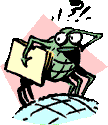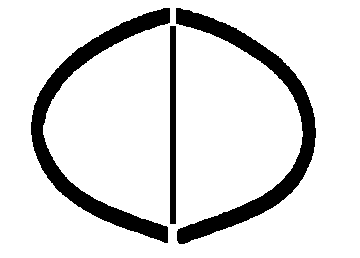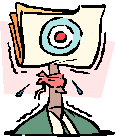Chapter 5: Exploring Biofeedback
In Max’s book The Awakened Mind, he defines biofeedback as follows: “Essentially, biofeedback is a new way of learning about ourselves, or a way of relearning, or realising for the first time, what the body already knows - how to act, how to feel, even how to heal - if we listen to it . . . biofeedback can be said to provide the means to become aware - acutely aware - of ourselves, and thereby gain the possibility of self-control.”
This interpretation emphasises discovery and learning
about ourselves and our emotions which we are unlikely to gain from responding
to a signal from a machine. Max
used the term “biofeedback” because it was widely accepted but
he preferred the word “biomonitoring” for his way of teaching use
of the machines: the subject did the exercise and then, afterwards, looked
at the machine to see what change had occurred. By
contrast, the standard biofeedback method registers the change as it is happening
so that attention is on the feedback from the machine instead of on the underlying
problem.
In the Buddhist view, most of our problems arise from
the inability to control our attention. If this is true, a simple biofeedback
tone is unlikely to capture our attention. While
it might be better to use techniques specifically aimed at training the attention
first, there is usually no time, nor are there people skilled in imparting
such training. A modern biofeedback
compromise used, for example, by clinics to help people with attention deficit
disorder (ADD) is to make the feedback more interesting in order to capture
and maintain the subject’s attention. The
feedback might be a complex video image where the subject has to remain travelling
on a road. If the object of the biofeedback training is to maintain alpha,
then any reduction causes the image to veer off the road. These
techniques undoubtedly are effective but do not teach, in the words of Dr
Lang Stephenson, “the hygiene of a quiet mind”.
As Buddhists teach, our attention needs to be in the present
moment, not lost in wishful thinking about the past or hopes for the future;
nor distracted by thoughts floating through our mind. This
is easily said but to make it a reality requires the depth and breadth of
training which was the gift Max gave to those who came to his classes.
Almost all biofeedback machines are linked to the body’s
autonomic nervous system (ANS) which prepares us to meet danger and relax
again afterwards. This primitive
system dates back to the early mammals of 50 to 100 million years ago. But
there is an important distinction between human and animal responses. An
animal in its natural state does not worry about the past and future. A
lion does not sit in its lair, biting its claws thinking: “It’s
not my day today, that’s the third deer which has got away.” But
humans do behave in this way, and respond physiologically with our ANS to
memories of the past or fears of the future. Today these responses are not usually appropriate: if we are
meeting a new boss, we do not need the body responses of extreme physical
danger, sweating palms, fast shallow breathing and so on; we need a clear
mind unimpeded by such physical reactions.
There are many well-known expressions that arise from
physical changes due to activation of the sympathetic branch of the autonomic
nervous system, the Fight, Flight and Freeze responses, which show that we
know very well how our body reacts to stress. Here
are some linked with the preparation of the body to meet danger:
Digestion shuts down in a moment
of danger:
Butterflies in the stomach.
I cannot stomach that.
That needs digesting.
Bellyaching about something.
Oxygen intake increased:
Took my breath away.
Breathless with anticipation.
I caught my breath.
Afterwards I breathed a sigh of relief.
Gets up my nose.
If we perpetually have a shortage
of breath:
It sticks in my throat.
It makes me choke.
My heart was in my mouth.
Blood goes from extremities
to the muscles to facilitate action:
I have cold feet about . . .
My blood ran cold.
Cold sweaty hands when we are frightened.
Increasing blood flow to muscles:
My heart leapt.
My heart missed a beat.
My heart was in my mouth.
Making yourself look larger to frighten off the enemy (an ancient response which no longer functions for us but we still have it):
My hair stood on end.
Made me bristle.
Made my skin creep.
My hackles came up.
Muscles
toned ready for action (while this is not directly caused by the ANS,
it is linked with the need to be ready for action):
It is a pain in the neck.
Uptight.
Highly strung.
Freeze (and hope the danger will pass you by):
Rooted to the spot.
Paralysed with fear.
When Max began his classes his favourite instrument was
the ESR meter. To give more
subtle indication of relaxation, he needed to combine hand temperature with
ESR readings but in 1975 his temperature meter was rather large and expensive.
When a small, cheaper meter became available, it could be shown that relating
ESR and temperature readings enhanced the value of each of the readings;
for example, the state of sleepiness could easily be separated from that
of true relaxation.
For the well-functioning individual, the ideal value is
the high-value ESR reading (in ohms) that he or she can change at will. Hand
temperature will be regularly above 30deg C. It
does not mean that all your problems are solved but indicates that this particular
link between the mind and the body, the autonomic system, will not be a handicap
in the quest for self-knowledge and an awakened mind.
Relaxation and breathing
practices
For Max relaxation was not a sleepy state but rather one
in which to be awake and aware. To
teach relaxation with subjects lying down is giving the wrong message to
the body, he believed. ESR and
temperature meters are able to show the difference between sleepy states
and true relaxation.
There
have been so many studies of the effects of good and bad breathing habits,
this must surely be the point at which to begin. Here
is practice taught by Max based on his Zen training.
Zen
Breathing Practice
Sit comfortably. This can be in full lotus position, half
lotus with legs crossed, or on a comfortable but firm chair. Whichever
you choose, it is better not lean on anything and to keep the back straight.
Imagine that you are being pulled up by the hair at the back of your head
then, keeping the back straight, just relax the position. In
this practice try to stay awake, aware and undistracted so do not do the
practice lying down because that position suggests sleepy time.
Next the breathing: On the first breath only, empty
the lungs by forcefully expelling the stale, old, air, then allow the breath
to come back naturally and let this be the natural maximum of the breath. It
should now be possible to take in a lot more air but do not do so.
Now begin to count, on the out-breath only, up to 10 and
then begin again at one. A useful
image to add is of a wheel turning; the meaning of this image is that the
in-breath is equal to the out-breath and that there is no pause as the breath
changes direction. This practice
then consists only of counting up to 10 on the out-breath without going to
sleep. If you lose the count,
do not get exasperated with yourself but begin again patiently counting from
one. Your breath rate should
drop below 10 a minute if you are doing this practice well but if you begin
to feel out of breath then you are breathing too slowly.
If you can claim the time and space in a busy life to
do this practice, you will learn more by experience about how energy and
breathing are related than this explanation can describe. You will undoubtedly feel less tired, tasks will become easier
and relationships probably less fraught. Energy
though, is more than not feeling tired; it includes zest for life and joy
in discovering the rich interconnectedness of being alive (ref 5-1).
Towards the end of 1973, Max acquired a simple, single-channel
EEG machine that could be switched in turn to the alpha, beta or theta bands. He
was using the machines with traditional meditative techniques, so he was
not concerned with the problem of trying to find out how to train subjects
to produce or control their alpha brain wave. But
he noted that the alpha wave appeared during meditation and he gradually
uncovered its significance in relation to mental techniques which he knew
well. Though alpha appears during
meditation, he did not make the mistake of thinking that the experience in
the alpha state was identical to that of meditation. Early
claims, that one could avoid the hard work of many years’ training in
the mountains by a little alpha training with a biofeedback machine, were
seen to be hollow. These claims
were made by people who had very little experience of meditation.
Since Max had already spent many years studying electrical
skin resistance (ESR), he naturally looked to see if there was a relationship
between the EEG and ESR responses. Even with his simple EEG biofeedback machine, he was able
to make the following claims:
Beta +
low ESR (in Ohms) = panic
states
Alpha + high ESR = meditation
Delta + medium ESR = sleep
Alpha + medium ESR = hypnagogic state
Theta + high ESR = dreaming sleep
Theta + low ESR = mediumistic trance
He published this table in the Journal of the Society
for Psychical Research in 1974 (ref 5-2) and showed that the meaning of the
brain rhythms was modified by the subject’s ESR reading. This
was a landmark observation in biofeedback research and suggested one reason
why many alpha studies seemed contradictory.
Soon after Max acquired this EEG machine, the healer Jose
Pogson joined Max’s courses. He
was surprised to find that when Jose was connected to it she produced an
output from each of the three bands, alpha, beta and theta, simultaneously.
Moreover, he found, the same effect was seen whether the machine’s head
contacts were placed over the right or left sides of the brain. This accidental observation in the early 1970s was the beginning
of many years of studying the relationship of the different brain rhythms,
and also between healers and their patients. Many
questions arose. Was Jose Pogson
actually showing many rhythms at the same time? Did
healers’ brain rhythms differ from those of other people? Then
Max noted that certain other people did apparently show a multiplicity of
brain rhythms.
We could not see a simple solution to the problem of displaying
the different brain rhythms simultaneously. Then,
fortunately, an integrated electronic circuit appeared on the market which
could drive a row of 16 light-emitting diodes (LEDs). This solved the problem.
We used it in the mode of a moving point of light, the position of the illuminated
point along each row indicating the amplitude of the signal. It
was ideal to create the kind of display we needed. We called it the Mind
Mirror. The prototype machine was rather crude-looking - Isabel still has
it for a future museum - but we now could show an EEG response from both
the left and right hemispheres, each analysed simultaneously into different
channels.
It was an exciting moment when we connected the leads
from the Mind Mirror to our first subject, during one of Max’s groups,
on June 1 1976. We switched the machine
on and waited for the rhythms to show. As
Max had noted before with his single-channel EEG, there was indeed a response
in all the bands - alpha, beta and theta. Watching
the moving points of light winking along the rows of diodes and forming patterns,
indicating the dynamic interplay of the different bands, was magical. It
was one of those moments when you expect to be impressed intellectually but
what actually happened was an experience, as though outside of time, which
foreshadowed the many thousands of patterns we would see in the future.
When Max’s later research showed that the alpha experience
depended on what other frequencies were present at the same time, he demonstrated
clearly why there was so much disagreement on the meaning and value of the
alpha brain rhythm. The only
other researcher we have discovered
who had noted that brain rhythms could appear in mutual relationship when
undertaking different tasks was AR Luria, the Russian neuropsychologist (ref
5-3).
Combination of Brain
Rhythms
Theta, for example, is found in dreaming sleep. When only
theta is present, dreams are often not remembered afterwards. In
the class, during guided imagery, a student would often claim to have fallen
asleep. Yet the Mind Mirror display did not show the delta wave of
sleep. If a theta response was
present on the display we could deduce that the imagery had been followed,
albeit at an unconscious level.
We now have another clue from the dream state. It
has been noted that if someone is having a lucid dream - one in which he
or she knows they are dreaming - then both alpha and theta will be present
(refs 5-4, 5-5). Similarly, when following guided imagery, the subject will
be able to learn from the guided imagery and their own reactions to it, if
both alpha and theta are present. From
this Max made a pivotal deduction: the alpha wave appears to be a gateway
that opens to our everyday awareness levels that are normally unconscious.
This view of alpha modifies the usual description of it
as a calm state; our table suggests that it appears alone in the half-waking
state when falling asleep (hypnagogic) and waking up (hypnopompic), where
the imagery is inconsequential and disconnected. It
can also appear in the fully waking state when it appears to be linked with
a pathological state; we found that some subjects, showing alpha only, seemed
to have difficulty separating fantasy and reality. One
subject described it as a chrysalis state, very comfortable inside but awful
if disturbed. Mental states
linked to alpha alone appear not to be particularly useful; but allied to
theta, alpha becomes the royal road opening the unconscious to awakening
awareness.
Max called the combination of three responses - alpha,
beta and theta as displayed on the Mind Mirror - the State 5 pattern and
claimed it was the pattern of the awakened mind. The traditional Sanskrit name for this experience is Sabikalpa
Samahdi (5a) when it is a temporary first experience of the road towards
enlightenment; and Nirbikalpa Samadhi (5b) when it is permanent and unshakeable
in everyday life. We found it
to be the hallmark of anyone who is particularly competent in what they do.
Those who show State 5, we discovered, include sportsmen and sportswomen,
television presenters, Indian swamis and healers.
Based on his experiences and studies Max presented a hierarchy
of states of consciousness as shown in Table 1. These are explored in The
Awakened Mind.
8 |
Cosmic Consciousness Unity |
? |
7 |
Being Cognition - Maslow Psychedelia - Gowan Illumination - Bucke Self-remembering - Gurdjieff God Consciousness – Maharishi’s 6th level |
|
6 |
Voidness & Compassion - Buddhism |
|
|
Fifth State - Goleman Illumination - Fromm The Awakened Mind - Cade |
|
|
5b |
Sabikalpa Samadhi - Traditional Lucid Awareness - Cade |
|
4 |
Fourth State - Wallace
Meditation - Traditional Transcendental Consciousness - Maharishi |
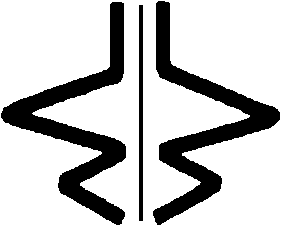 |
3 |
Waking
Waking Sleep - Gurdjieff
|
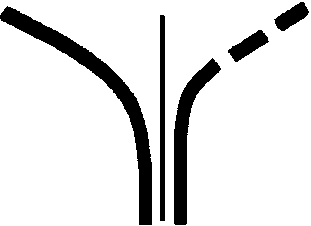 |
2 |
Hypnagogic Imagery |
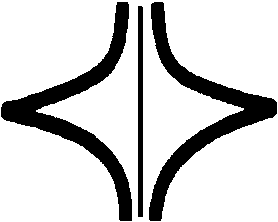 |
1 |
Dreaming Sleep |
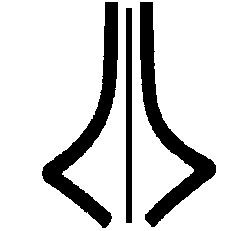 |
0 |
Deep Sleep |
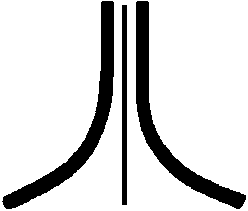 |
Max also was the first to use stroboscopic light as a
technique, in 1974 or before, as an aid to relaxation and development of
imagery.
In his courses Max very often used guided imagery, some
of which he created. Many useful writings on attitude to life, meditation,
and exercises may be found in the writings of Krishnamurti (ref 5-6). Idries
Shah has collected many Sufi stories (refs 5-8, 5-9). Other sources of imagery
are: Passages - A guide for Pilgrims of the Mind (ref 5-10); The Awakened
Mind contains many sensory development exercises and guided imagery sequences.
(ref 5-11); Anna Wise’s
book The High Performance Mind has many exercises that can be validated with
biomonitoring machines (ref 5-12).
References
5-1 Reshad Feild. Breathing
Alive, A Guide to Conscious Living. Element Books 1988.
5-2 Journal of the Society
for Psychical Research. 1974??
5-3 AR Luria. The Working
Brain. Penguin Books. 1973.
5-4 Private Communication from Peter Fenwick, Head of EEG, St
Thomas’s Hospital, London.
5-5 Tyson and Hunt. Psychophysiology July 1984 Vol 21: p 442-451.
5-6 The Penguin Krishnamurti Reader. Penguin Books 1976.
5-7 The Second Penguin Krishnamurti Reader. Penguin Books 1976.
5-8 Indries Shah. The Pleasantries
of the Incredible Mulla Nasrudin. Jonathan Cape 1968.
5-9 Indries Shah. Thinkers
of the East. Jonathan Cape 1971,
Penguin Books 1974.
5-10 Marianne S. Andersen, Louis M Savary. Passages, A Guide for Pilgrims
of the Mind. Turnstone 1974.
5-11 See 1-1
5-12 Anna Wise. The High Performance Mind. Jeremy P. Tarcher/Putnam 1996

